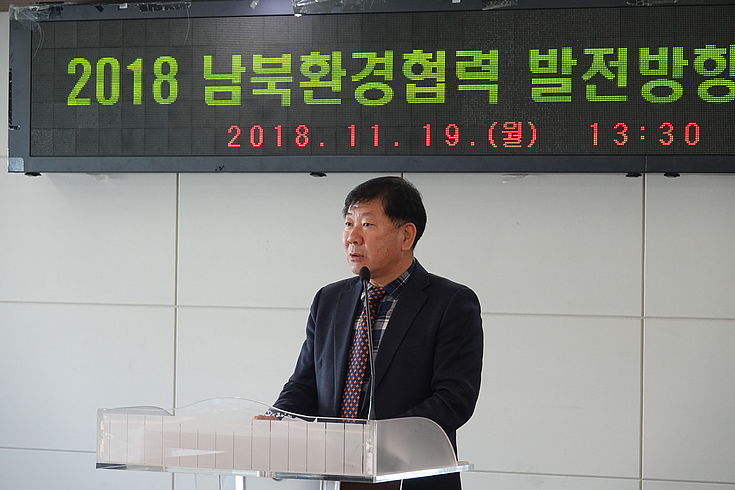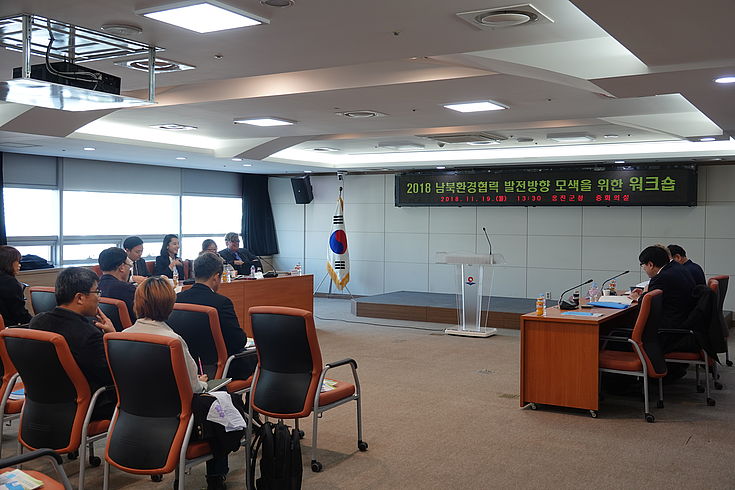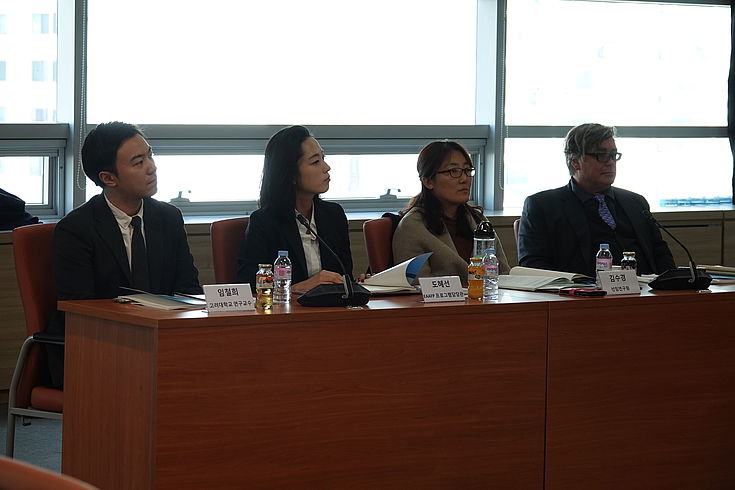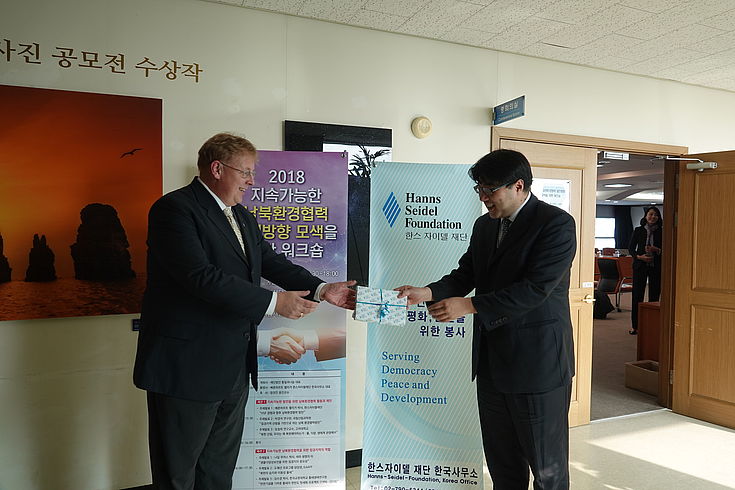Workshop
Finding Ways for South-North Korean Environmental Cooperation
Park Jang-Gyu, Vice-Governor of Ongjin County giving his welcoming remarks
HSS
Ongjin County is an area of significant value for the environment and biodiversity on the Korean peninsula. It is also one of the counties divided between North and South, making it a suitable place to explore potential cooperation between the ROK and the DPRK. In order to deepen the understanding and raise awareness about both of these issues, a workshop was held on November 19, 2018, at the Ongjin County Municipal Building, organized by Ongjin County, the UniKorea Foundation and the Hanns Seidel Foundation. Due to the rapid economic development in South Korea during the last 30 years, a large part of its natural resources disappeared, but in recent years the country has been realizing that is important to try to preserve natural resources. Also, North Korea seems to be aware that economic development should not happen at the cost of the environment. Therefore, environmental issues are a starting point for possible South-North cooperation projects, which is what Park Jang-Gyu, Vice-Governor of Ongjin County, Dr. Bernhard Seliger, representative of HSF Korea and Jeon Byeong-Gil, executive director of the UniKorea Foundation, emphasized in their welcome speeches.
The workshop took place at the Ongjin Municipal Building
HSS
In the following presentation, Dr. Seliger presented examples for such environmental cooperation between South and North Korea. In order to make significant changes, it is important to first identify the causes for environmental problems in North Korea and then try to find solutions or ways to reduce those problems. Though it might seem more impactful to cooperate on the state level, in practice working together on city or county level is not only easier to realize, but also more likely give useful practical results. Such a cooperation does not need to be expensive but can start small and can be expanded later if successful. But the most important part is to not only talk, but actually start somewhere, which was the most striking conclusion of Dr. Seliger’s presentation. Also, concrete budgets for possible projects and positive outcomes from earlier projects between HSF and North Korean partners were presented, showing that such projects are not only possible, but also likely to be rewarding.
Prof. Lim Cheol-Hee (Korea University), Ms. Do Hye-Seon (EAAFP), Dr. Kim Soo-Kyoung (Eco-institute for Oriental Stork) and Dr. Nial Moores (Birds Korea)
HSS
There are many reasons why it is of great importance to try to preserve and restore the forests in North Korea. During the past decades the forests in North Korea were cut down and overused, and because of this change in nature the agriculture also changed. While the water supplies of the forests steadily decreased, the water demand for agriculture increased, leading to not only more environmental problems but also problems regarding water supply, as Prof. Lim Cheol-Hee from the Korea University explained. Reforestation is therefore not only beneficial for solving water supply problems, but also for reducing fine particles in North Korea, providing overall better health for the citizens and animals living in the area. Especially birds can be an important indicator for determining if an environment is healthy or not. Although living conditions in North Korea are extremely tough for humans, they are very beneficial for birds, the primary reason why some bird species that have disappeared from South Korea are still common in North Korea. Dr. Nial Moores from Birds Korea therefore emphasized that while it is a great challenge, it is crucial to find a development model which can improve people’s living conditions and maintain biodiversity at the same time.
Dr. Bernhard Seliger (HSF) and Mr. Jeon Byeong-Gil (UniKorea Foundation)
HSS
For example, an important bird species that is worth preserving is the stork, which Dr. Kim Soo-Kyoung from the Eco-institute for Oriental Stork informed about. The storks in Northeast Asia are nowadays a threatened species with only around 2500 animals living in the area. Before, there were several stork breeding places even in South Korea, but now most of them have disappeared due to worsened and more dangerous living conditions for storks. Therefore, there are now several projects that aim to create better environments for the storks in Korea. Another organization dealing with the preservation of birds is the East Asian - Australian Flyway Partnership (EAAFP) which brings together 37 partner organization that work together to conserve migratory waterbirds and their habitats. They have arranged several successful projects in North Korea for this purpose, showing that international organizations have already been working together successfully on environmental issues in the DPRK for several years. As it is always easier to find and realize new solutions together, Ms. Do Hye-Seon from EAAFP suggested more organizations to join the partnership and support further work to raise awareness about environmental issues in the DPRK.




